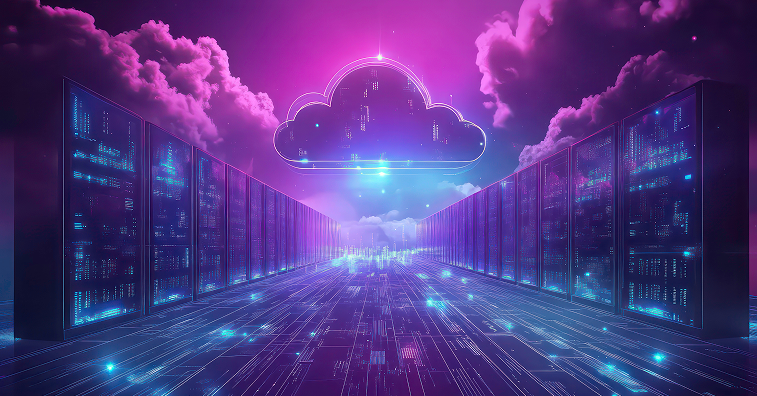- Why Amagi
-
Solutions
Contact UsUse CasesWho We Serve
-
Products
Contact UsCloud ModernizationStreaming TV
-
Resources
Contact UsINDUSTRY REPORTSAmagi FAST Report #14: Navigating the Emerging Distribution LandscapeJanuary 30, 2025Read More
-
Company
Contact UsNewsroomAmagi launches AI-powered Smart Scheduler to improve content programmingApril 3, 2025Read More
Blog
Disaster recovery: Is your broadcasting network invincible?
By Kushagra Pandey, Product Manager, Amagi LIVE - October 6, 2021
Disasters can disrupt almost anything. Whether natural or man-made, they have the power to uproot any business and broadcast or TV networks are no exception. It’s up to you as a successful broadcaster to come up with a plan that can come handy in case of an emergency.
A natural calamity or man-made disaster can impact any point in your broadcast workflow, resulting in broadcast blackout and loss of revenue. By investing in a robust disaster recovery plan, you can ensure continuity and reliability of service.
The challenge before broadcasters
In most cases, broadcasters have a primary and secondary output to distribute their signal. If one goes down, the other can take over. Now imagine a situation where both these distribution channels are in the same physical location and a disaster hits the very area. What happens in that case? This calamity could potentially take down the whole station making it completely redundant to have a secondary output.
While major television networks can afford to invest in creating a parallel infrastructure, it might not make sense for a smaller broadcaster. A big movie channel might be able to handle the disaster better due to the availability of evergreen content that can be played for a few hours during a calamity.
So, how do you build a broadcasting network so robust that no disaster, no matter how big, can impact it in any way? The answer is—Cloud. Your broadcast network may not be invincible but switching to cloud can make it indestructible.
Cloud is, by definition, disaster-proof. In most cases for broadcast, I don't even need a disaster recovery system if I'm running on cloud. The entire system is architected to be disaster-proof.
Traditional broadcast set-up is bad for your pocket as you’ll need to replicate the entire infrastructure of the primary feed and the ROI will remain questionable.
How does a cloud-backed solution help?
No office access? No need to worry.
Imagine a cyclone hits your area and you are unable to get out. Since you can’t physically approach your office facility, how will you run your broadcasting network smoothly? It’s in scary situations like these when a cloud-powered Disaster Recovery (DR) solution can emerge as a savior.
Cloud allows you to have a distributed architecture. You could even go so far as to have nothing on-premises and access everything remotely or have multi-region capability, without having to invest in hardware-based facilities running in parallel.
Hot, warm, or cold: Traditional vs cloud DR
In simple terms, hot, cold, and warm are terms used to describe various recovery sites that work to manage data recovery in case the primary feed fails. These terms have slightly different meanings when used for a traditional vs a cloud DR. The definitions totally depend on how the disaster recovery sites work and the resources needed.
Traditional DR
- Hot: Exact replica of the data centre that has all hardware and software operating systems running in parallel to the primary feed.
- Cold: No hardware equipment, just a space reserved to act like a data centre, if needed.
- Warm: This lies somewhere in between hot and cold sites in terms of hardware and software system deployment.
Cloud DR
- Hot: When you use a cloud-powered disaster recovery solution, ‘hot’ refers to a DR that runs 24/7 and is readily available to be engaged automatically, through a switcher. Here, playout happens simultaneously and redundantly from two different sources.
Amagi can support live playout in a DR situation as well. The disaster orchestrator can bring up the live infrastructure and start pulling live streams from the source quickly and pass it along for playout. - Warm: Cloud plays a major role here. Here, a broadcaster might have content prepped and ready to go from the cloud, but not actually start playout on the channel until disaster strikes. The playout server comes up based on the need, whereas the automation (media management & playlist management) is always running. The playout server is in general the largest cost component.
Amagi recently built an orchestrator for a customer’s cloud-based disaster recovery system. The solution constantly pulls in the output from the primary feed and keeps watching the same. If that feed goes down for a duration more than a configurable threshold, the cloud backup spins up automatically. - Cold: Cloud has no role to play here. When a disaster occurs, the whole system is orchestrated to automatically come up via some trigger. It might take some time to fetch the assets, playlist etc., and once ready, it starts playing out the channel. It's a low-cost option as nothing needs to be running 24/7 on the cloud.
Why go for cloud-based disaster recovery solution?
- They provide you a cost-effective solution to manage your workflow without having to heavily invest in hardware
- You get an end-to-end disaster recovery platform for all your playout and content delivery needs
Are you ready to weather the storm with cloud-backed solutions? Get the Amagi advantage.
Amagi’s disaster recovery solutions have been designed to work wonders for any broadcast network irrespective of its size. You can choose the kind of backup you want from the following options:
- 24/7 disaster recovery: Ensure disaster readiness for the entire broadcast workflow. Automatically sync content and playout for a disaster recovery solution with high content availability.
- On-demand disaster recovery: Use disaster recovery as a ‘flexible backup’ platform that can activate disaster recovery at short notice, without the need to operate a fully replicated secondary broadcast feed.
- Rescue playout: For basic level of disaster readiness, use Amagi’s Edge playout or STORM IRD to store and play content.
Reach out to us at cloudandme@amagi.com to know more!
Related Blogs
Get Started
Increase revenue and reach with our Broadcast & Streaming solutions.
Channel creation. Content distribution. CTV monetization.





